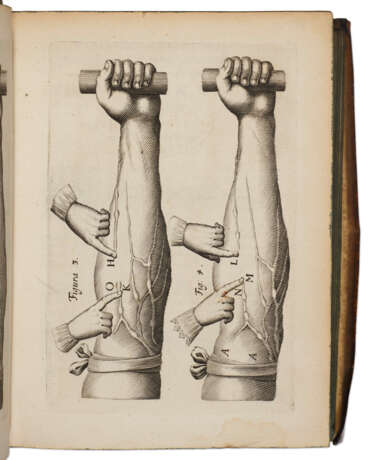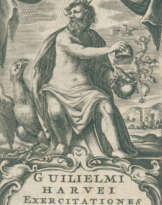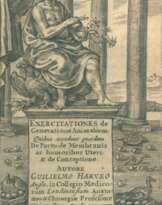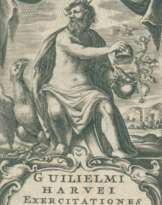ID 887813
Lot 40 | De Motu Cordis & Sanguinis in animalibus, Anatomica Exercitatio
Estimate value
$ 15 000 – 20 000
Annotated second editionof Harvey's opus on the circulatory system, which sparked a Copernican revolution in the field of physiology—"the cornerstone of modern physiology and medicine" (Garrison-Morton). Annotated by a contemporary physician. The exceptionally rare first edition was published in Frankfurt in 1628 and an incomplete edition followed in Venice in 1635; this is the earliest reasonably obtainable edition, and the third overall. Harvey was an English physician who studied at Padua, and this books his discovery and experimental proof of the circulation of the blood, with its iconic engravings modeled on those of his teacher, Fabrici (see lot 23). Fabrici had published the first serious work on the venous valves, but it was left to his student to fully understand their significance. Through his teacher, Harvey met Galileo, and seems to have taken inspiration from Heliocentrism in his work on the circulatory system.
"For twenty years Harvey pursued his objective in both human and comparative anatomy. He proved experimentally that the blood's motion is continuous and always in one direction, and that its actual amount and velocity makes it a physical impossibility for it to do otherwise than return to the heart by the venous route, the heart being itself a muscle and acting as a pump. He showed how the whole of the blood passes through the lungs, is returned to the left side of the heart, then passes through the general circulation and returns to the right side; he even suspected the existence of the capillaries connecting the smallest arteries with the smallest veins, but without the microscope he could not see them" (PMM). This edition also includes the attacks on Harvey by Parisanus and Primrose, and the third edition of Aselli's classic on the discovery of lacteal vessels. Keynes 3; Krivatsy 5329 (Harvey) and 447 (Aselli); Wellcome 3070 (Harvey) and 506 (Aselli); Heirs of Hippocrates 256 (Harvey only). See PMM 127 (first edition).
Three parts in one, quarto (191 x 146mm). I: 2 engraved plates; II: 4 engraved plates (dampstaining at ends, some toning). Contemporary Dutch vellum with yapp edges, edges black (pastedowns lifted). Provenance: Henrick Lubaeus, b. 1617, medical author (inscription dated 1644 and other marginal annotations) – Initials ‘J W’; and date 1734 on title – Library of the College of Surgeons of Ireland (stamp on title, blindstamp on plates and following text leaf).
Also bound with: BECKHER, Daniel. Medicus microcosmus seu spagyria microcosmi. Leiden: Jacob Maire, 1633. Krivatsky 1011.
| Artist: | William Harvey (1578-1657) |
|---|
| Artist: | William Harvey (1578-1657) |
|---|
| Address of auction |
CHRISTIE'S 8 King Street, St. James's SW1Y 6QT London United Kingdom | |
|---|---|---|
| Preview |
| |
| Phone | +44 (0)20 7839 9060 | |
| Buyer Premium | see on Website | |
| Conditions of purchase | Conditions of purchase |







